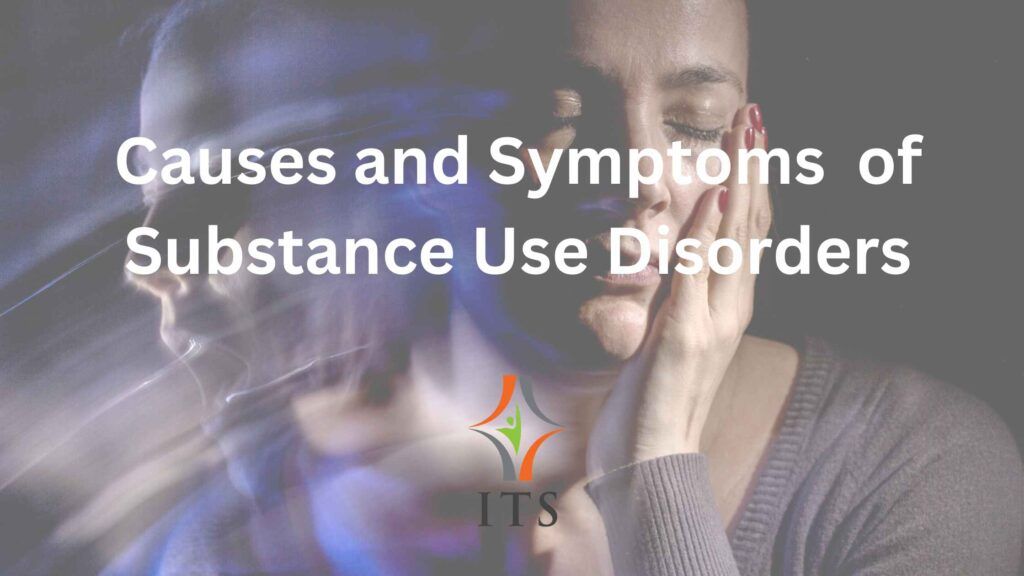Substance Use Disorders (SUD) represent a complex condition that affects millions of individuals worldwide, transcending age, gender, and socioeconomic backgrounds. Essential to addressing this challenge is a comprehensive understanding of its root causes and the symptoms it manifests. This knowledge not only illuminates the pathway towards effective substance use disorder treatment but also empowers individuals and communities to initiate preventative measures and seek help early.

Delving into the Causes of Substance Use Disorders
Identifying the causes of SUD is crucial for developing targeted treatment strategies. While the path leading to SUD varies for each individual, research highlights several common factors that contribute to the development of these disorders.
Genetic Predisposition
Genetics play a significant role in the risk of developing a substance use disorder. Studies estimate that genetics account for 40% to 60% of the susceptibility to addiction. Individuals with a family history of SUD are, therefore, at a higher risk, underscoring the importance of awareness and preventive measures within these families.
Environmental Influences
A person’s environment, including their family life, social circles, and community, significantly impacts their likelihood of developing an SUD. Exposure to high-stress environments, lack of parental supervision, and social normalization of substance use can all contribute to the initiation and continuation of substance use.
Psychological Factors
Mental health disorders such as depression, anxiety, and post-traumatic stress disorder (PTSD) often co-occur with substance use disorders. For many individuals, substance use begins as a way to self-medicate, seeking relief from mental health symptoms. Over time, this can evolve into dependency and addiction.
Recognizing the Symptoms of Substance Use Disorders
Early detection of SUD is critical for accessing timely and effective treatment. Recognizing the symptoms can be the first step towards seeking help.
Behavioral Changes
- Increased secrecy or lying: Individuals may hide their substance use from friends and family.
- Withdrawal from social activities: A noticeable retreat from hobbies, interests, and social engagements.
- Neglecting responsibilities: This includes poor performance at work or school and neglecting household duties.
- Risky behaviors: Engaging in dangerous activities, especially when under the influence, that they wouldn’t typically consider.
Physical Symptoms
- Changes in appearance: Sudden weight loss or gain, poor hygiene, and bloodshot eyes can be indicators of a substance use disorder.
- Withdrawal symptoms: Symptoms such as shaking, nausea, and sweating when not using the substance.
- Tolerance and withdrawal: Needing more of the substance to achieve the same effect and experiencing withdrawal symptoms when not using.
Psychological Symptoms
- Mood swings: Experiencing severe fluctuations in mood beyond the person’s normal behavior.
- Anxiety and paranoia: Increased feelings of unease, fear, or paranoid thoughts related to their substance use or other aspects of life.
- Loss of interest: Apathy or lack of interest in activities that used to bring joy.
The Pathway to Substance Use Disorder Treatment
Understanding the multifaceted nature of substance use disorders is essential in seeking effective treatment. Substance use disorder treatment involves a combination of medical, therapeutic, and support systems tailored to the individual’s specific needs.
Seeking Professional Help
The first step in overcoming a substance use disorder is recognizing the need for help and reaching out to a healthcare provider or substance use disorder specialist. They can offer a comprehensive assessment and develop a personalized treatment plan.
Comprehensive Treatment Approaches
- Detoxification: Safely managing withdrawal symptoms under medical supervision.
- Behavioral Therapies: Techniques such as cognitive-behavioral therapy (CBT) and motivational interviewing help individuals change their attitudes and behaviors related to substance use.
- Medication-Assisted Treatment (MAT): Medications can be used to manage withdrawal symptoms, prevent relapse, and treat co-occurring mental health conditions.
- Support Groups: Peer support groups provide a sense of community and mutual support, which is invaluable during recovery.
The Role of Supportive Environments
Recovery from SUD is greatly enhanced by supportive environments. Families, friends, and communities play a crucial role in supporting individuals through their recovery process, offering love, understanding, and practical support.
Conclusion
Substance use disorders are intricate conditions with wide-ranging impacts on individuals, families, and communities. By understanding the causes and symptoms, we take significant steps towards demystifying these disorders, reducing stigma, and enhancing access to effective treatment. Whether you are struggling with a substance use disorder, know someone who is, or work in support of affected individuals, knowledge and compassion are your most potent tools in the path towards healing and recovery.
